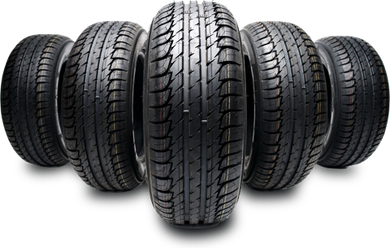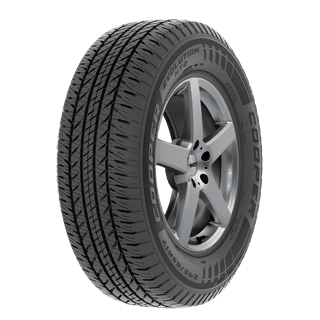Tire Solution: The Influence of Weather
When it pertains to guaranteeing optimal performance and security when traveling, comprehending the impact of climate condition on tire service is critical. From scorching heat to icy roads, each climate element can considerably affect tire capability and general driving experience. By diving into the effects of differing weather on tires, chauffeurs can obtain beneficial insights that might boost their lorry's efficiency and longevity. In this conversation, we will explore the elaborate connection in between weather and tire service, shedding light on the significance of weather-specific tire upkeep practices and factors to consider.
Heat and Tire Efficiency
When exposed to heats, tires experience changes in performance that can substantially impact automobile safety and handling. The heat produced from prolonged driving or warm weather condition problems creates the tire rubber to soften, resulting in lowered step life and increased wear. As the rubber ends up being softer, the tire's hold when driving lessens, impacting braking distances and general traction. In severe situations, extreme warm can also create tire blowouts, presenting a serious safety and security danger to the automobile and its passengers.
Additionally, high temperature levels can increase the process of tire aging, creating the rubber to wear away more quickly. To reduce the effects of heat on tire efficiency, drivers should routinely inspect their tire stress, turn tires to ensure even put on, and inspect for any kind of indicators of damages.
Winter Effects
Cold weather condition conditions can have a considerable effect on tire efficiency and safety. As temperatures decline, tire rubber can solidify, resulting in reduced grip on icy or snow-covered roads. In winter, tires may additionally shed air pressure extra quickly, which can impact managing and fuel effectiveness. Furthermore, cold temperature levels can cause tire sidewalls to stiffen, enhancing the risk of damages from craters or various other roadway dangers.
To reduce the results of winter on tires, it is important to routinely inspect tire pressure and inflate them to the supplier's suggested degrees. Utilizing winter season or all-season tires created for winter conditions can additionally enhance grip and grip on icy or snowy roadways - tire shop morris. Correct tire upkeep, consisting of normal inspections for wear and damages, becomes also more vital during cooler months to ensure optimal performance and safety
Rainy Issues Impact
During wet conditions, tire efficiency and safety and security can be dramatically influenced by the damp roadway surfaces and minimized exposure. The tread pattern of tires plays an important role in preserving grip on damp roadways. Tires with damaged treads are a lot more prone to hydroplaning, where a layer of water develops in between the tire and the roadway surface area, causing loss of traction. To battle this, drivers need to on a regular basis check their tires for adequate tread depth and think about spending in tires especially developed for wet conditions.

Snow and Tire Security
When driving in snowy conditions, having the right tires can make a significant distinction in security and performance. Winter months tires are developed with unique rubber compounds and step patterns to give far better grip on snow and ice compared to all-season tires.
In enhancement to using winter months tires, it is essential to ensure they are properly inflated. Winter can trigger tire pressure to drop, influencing traction and handling (tire shop morris). Routinely checking and preserving the proper tire read review pressure is crucial for optimal efficiency in snowy conditions

Weather-Related Tire Maintenance
When confronted with numerous climate condition, correct tire maintenance becomes an essential element of automobile safety and efficiency. Weather-related tire upkeep includes a variety of techniques targeted at ensuring optimal tire function and longevity in different weather situations. One crucial element of weather-related tire maintenance is tire stress policy. Changing temperature levels can cause tire pressure to differ, affecting traction and gas efficiency. Routinely changing and checking tire stress according click here to read to maker recommendations is necessary for risk-free driving in changing weather problems. Additionally, tire tread deepness plays a considerable role in managing various weather condition elements. Tires with ample walk deepness provide far better hold on wet or icy roadways, decreasing the threat of skidding or hydroplaning. Evaluating tire tread consistently and replacing tires when tread wear gets to a specific deepness is important for keeping traction and security in negative climate. By focusing on weather-related tire maintenance, drivers can boost security, improve lorry performance, and extend the lifespan of their tires.
Verdict
Finally, climate condition have a substantial effect on tire performance and safety. From heat affecting tire pressure and wear to winter reducing traction, it is important to think about the weather condition when maintaining and utilizing tires. Wet conditions can decrease grasp and bring about hydroplaning, while snow can raise the threat of crashes if tires are not correctly geared up. Weather-related tire upkeep is important in making sure optimal efficiency and security when driving.
In this discussion, we will explore the elaborate partnership between climate conditions and tire advice solution, losing light on the value of weather-specific tire upkeep methods and factors to consider.

 Jonathan Taylor Thomas Then & Now!
Jonathan Taylor Thomas Then & Now! Scott Baio Then & Now!
Scott Baio Then & Now! Pauley Perrette Then & Now!
Pauley Perrette Then & Now! Tina Louise Then & Now!
Tina Louise Then & Now! Robin McGraw Then & Now!
Robin McGraw Then & Now!